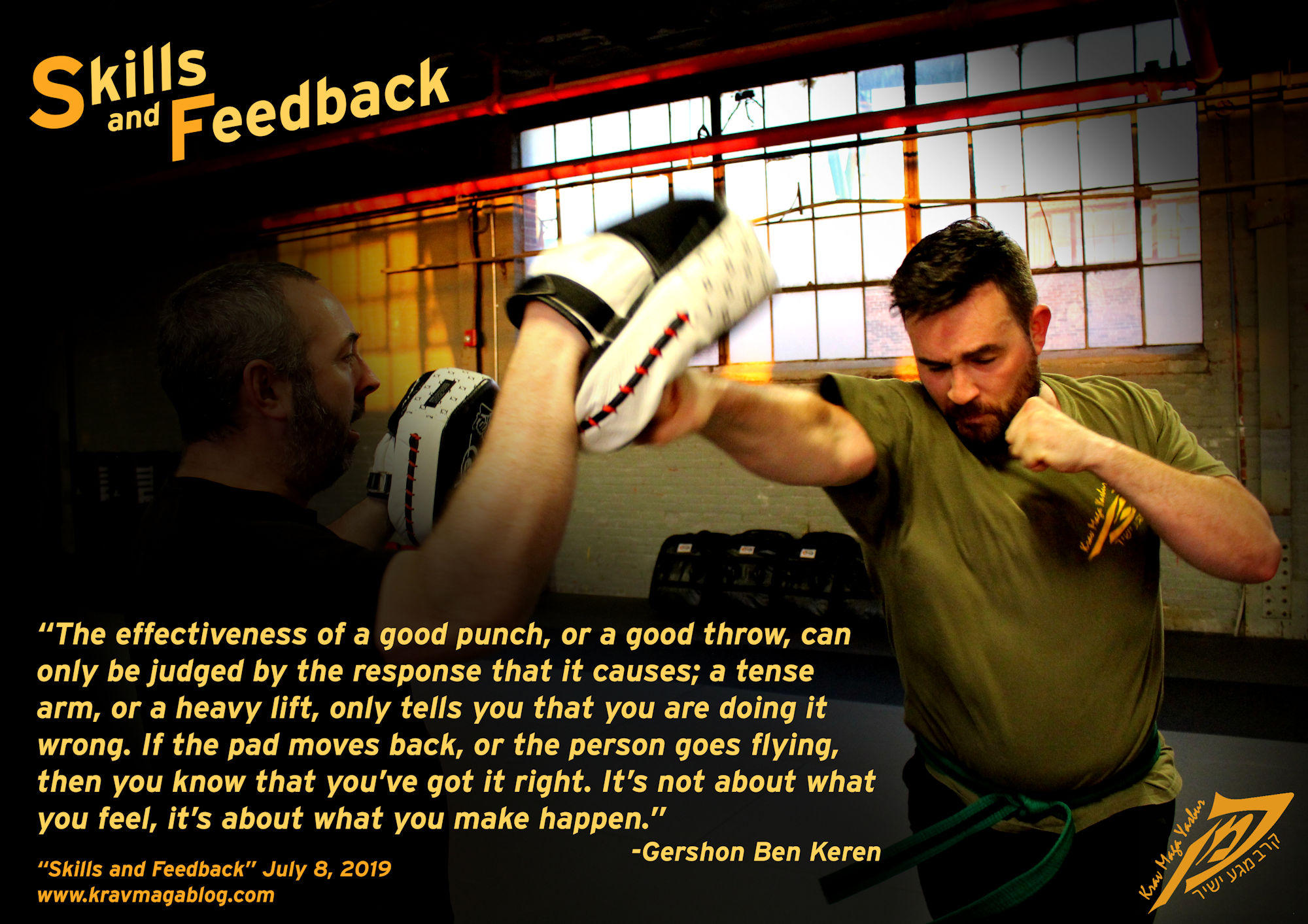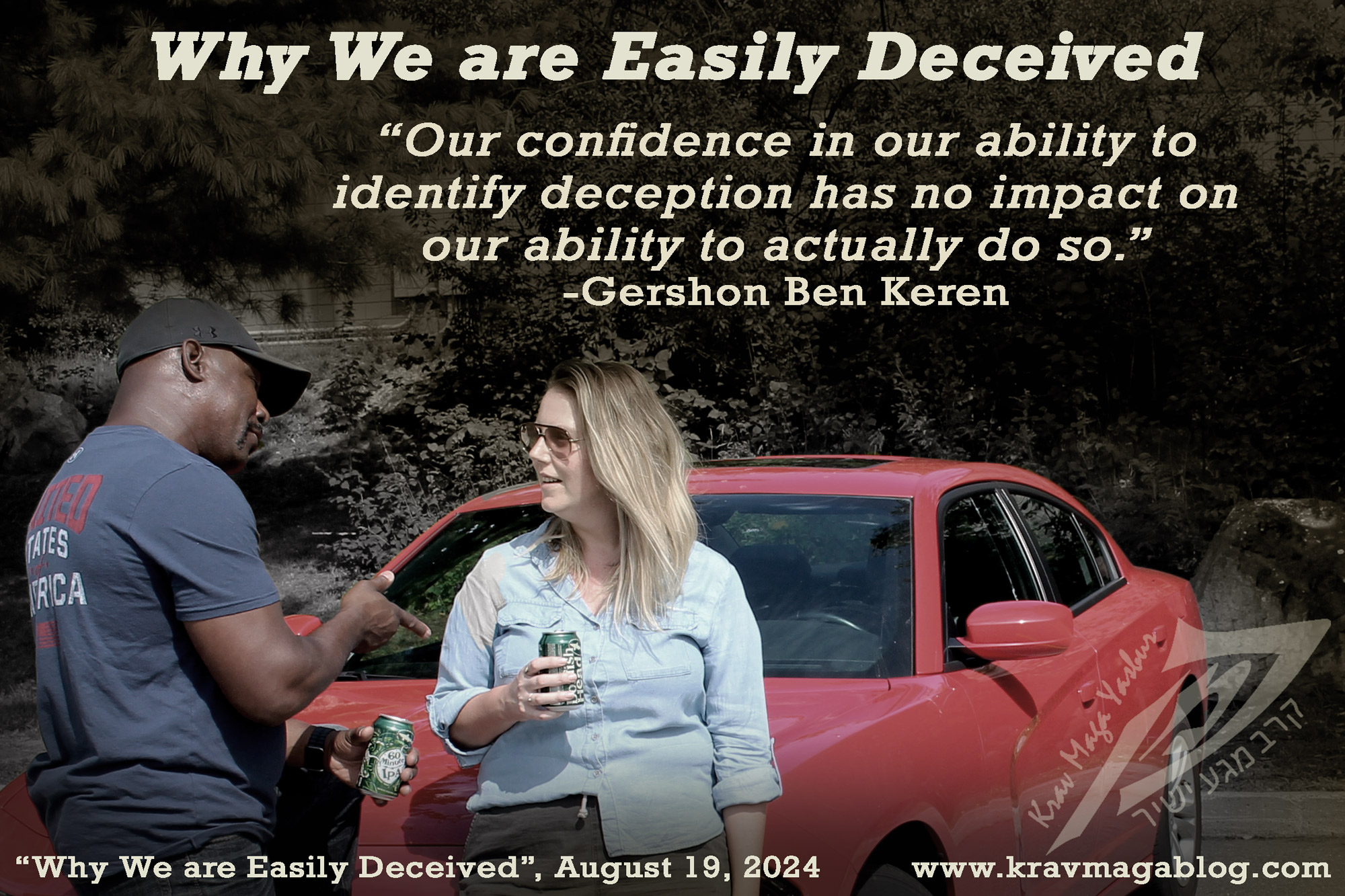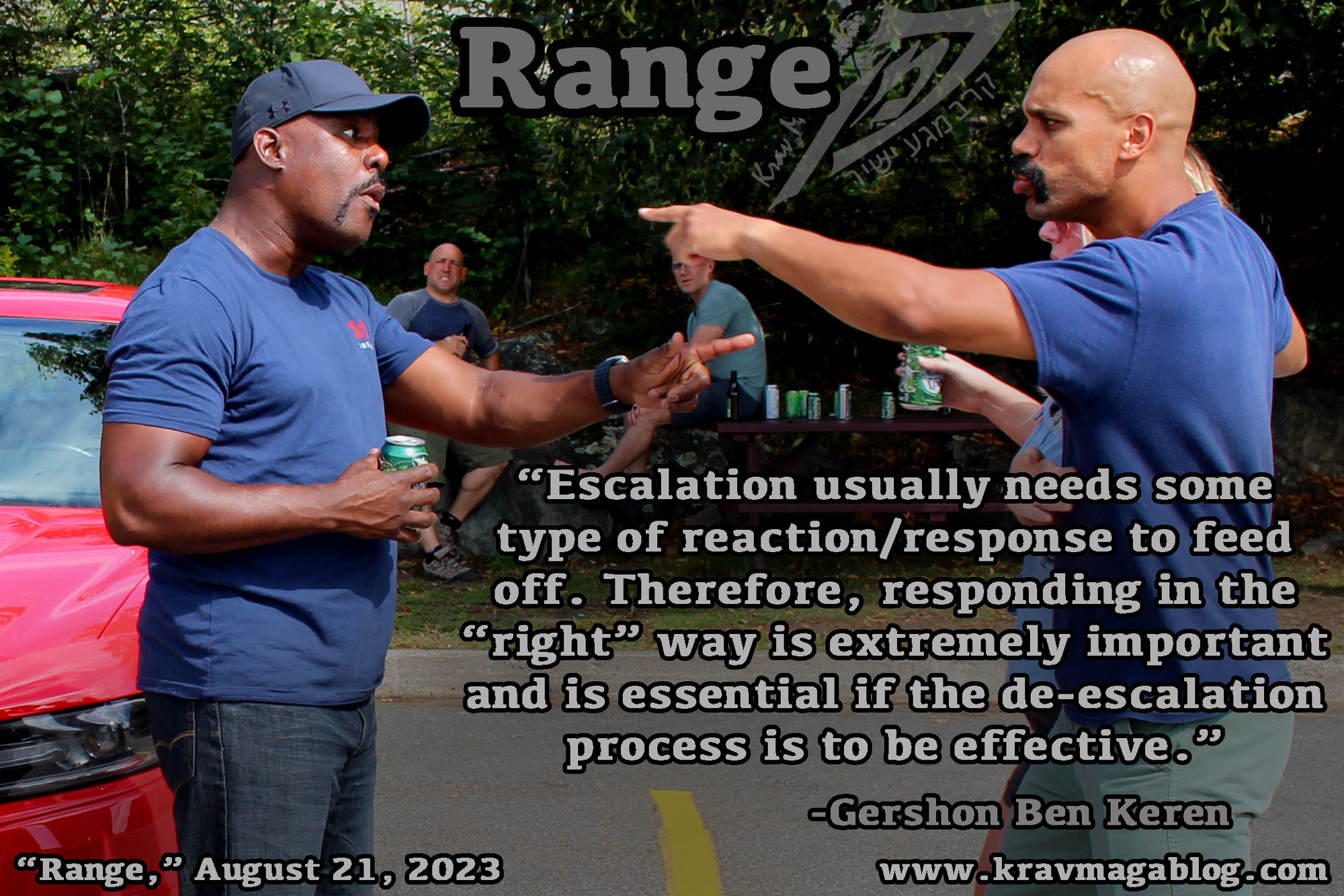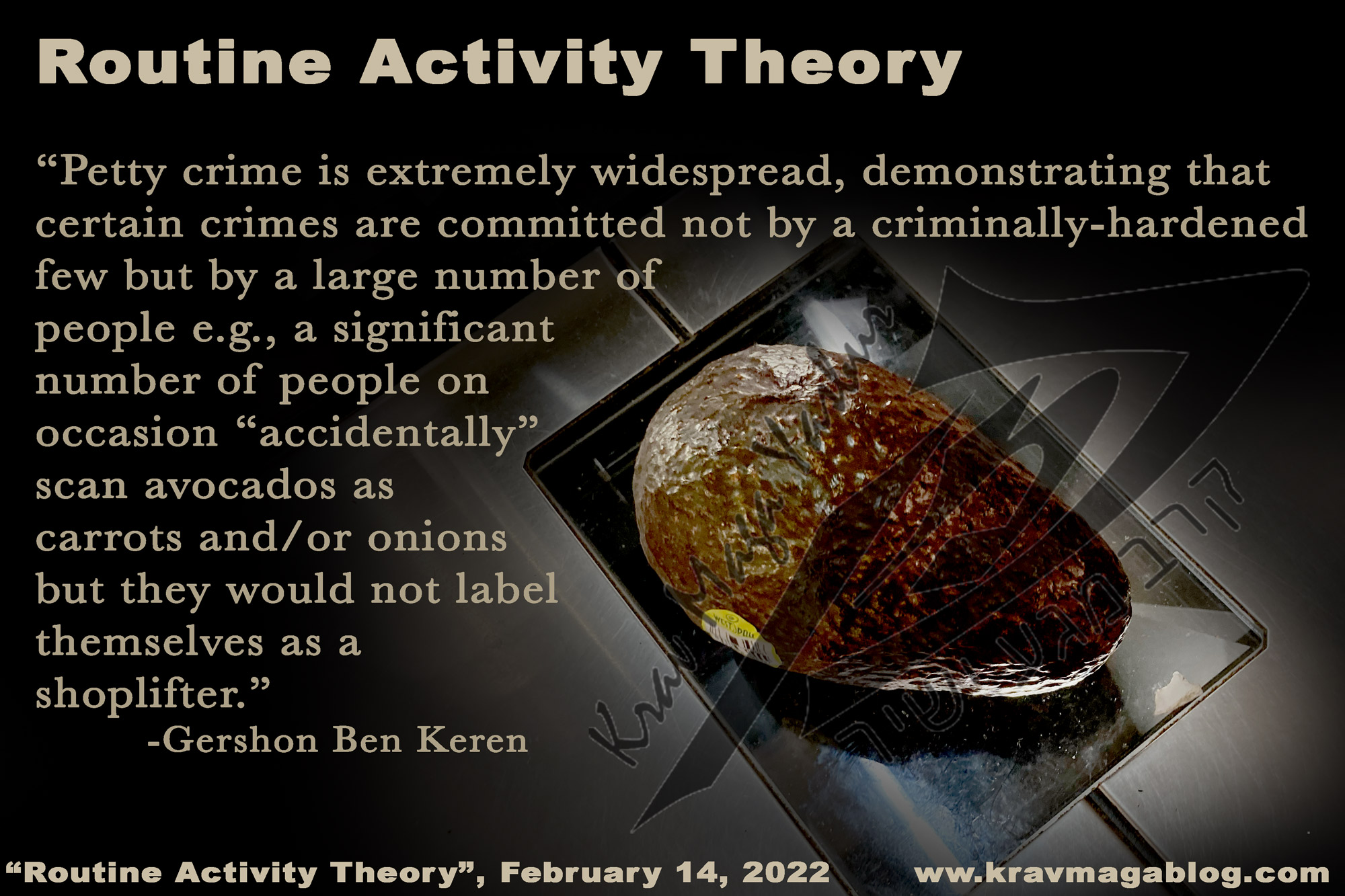Distinguishing Characteristics of Krav Maga, is an article written by Gershon Ben Keren, a 5th Degree Black Belt in Krav Maga, who teaches Krav Maga in Boston, MA. He has also authored three Amazon best-Selling Books on Krav Maga.
There are some people who believe that Krav Maga is simply a mish mosh of the “best” techniques from other systems e.g., if traditional ju-jitsu has an effective escape from a particular hold, then that should be put into the system, if Kali or Escrima has a good “technique” for dealing with a knife attack then that should be incorporated into the syllabus etc. Whilst there is no doubt that other fighting systems, including boxing and wrestling, actively influence – and in some ways provide a foundation for – Krav Maga it would be incorrect to believe that Krav Maga is simply a collection of the best of the best techniques from around the world with some aggression and fitness training thrown in for good measure. In this article I want to remind ourselves of some the ways in which Krav Maga differs from other martial arts/fighting systems, and how this makes it a distinct system in its own right rather than just a system that borrows from others. I also want to look at how these differences give the approach an advantage when it comes to real-world self-defense and fighting.
I have been teaching a lot of introductory/beginner classes recently and there is a phrase that I find myself repeating constantly, it is, “Krav Maga is about what you will do, not what you want to do.” I have been teaching and training so long, I don’t know if I picked this phrase up and it resonated with me, or if it simply reflects a sentiment that hit home to me when I did my first instructor course with the IKMF (the 29-day course was taught largely by Eyal Yanilov and Amnon Darsa). As I’ve gotten older, I’ve learnt to keep mouth shut – somewhat – when I see something I disagree with, or think is questionable etc, but not so much in my youth. I remember being shown the traditional “scooping” defense, to deal with an attack aimed at the stomach area. In it, the hand drops to knock the attack away (hand-defense), and you turn the body away from the strike (body-defense). At the time I’d fought competitively and had a different defense, which in my naivety I thought was superior, and due to the arrogance of youth decided to demonstrate and present as a superior alternative. To give him his credit, Amnon listened, and then said something along the lines of, “yes, but in reality, you won’t do that.” I decided to agree to disagree on this one and accepted his answer, not believing it. Later that day, the class was standing around listening to Eyal give a lecture on some subject, and Amnon was walking around, between different individuals. As he passed by me, he threw a punch towards my stomach. I didn’t do what I thought I’d do, and what I wanted to do (despite years of training) but instead dropped my hand and did something that resembled a “scooping” defense. That was a turning point in my understanding of Krav Maga i.e., “Krav Maga is about what you will do, not what you want to do.” I will readily admit that there may be systems that within the contexts in which they fight – the ring, the cage etc. - have “better” techniques and solutions but when it comes to situations where you are caught by surprise, Krav Maga techniques often overrule them.
Just as “Krav Maga is about what you will do, not what you want to do,” differentiates it from many other systems, the fact that techniques are grouped into families, makes it somewhat distinct. Jigaro Kano (the founder of Judo) stated that if you knew one throw you knew them all i.e., all throws in Judo are variations of a common process; you break balance, you enter/fit in, and then you execute the throw – once you understood and could perform this process, then every throw was simply a physical variation of this. As a Judoka, I appreciated how Krav Maga took this idea and formalized it somewhat, grouping techniques into “families”. When you look at the relative position of the person being strangled from the rear to their attacker, with that of somebody putting a knife to the front of their throat after coming up behind them, there is actually little difference between the two. The relative position of the two bodies are the same i.e., in both situations the attacker is behind the person being attacked/threatened, and has their arm across/around the other’s neck – the only real difference being that in one scenario the arm is putting pressure across the throat, and in the other a knife is positioned against the neck/throat. By recognizing this, a similar solution can be applied to both. There are two huge advantages to doing this: one, there is less for a practitioner to have to remember and two, when a practitioner is training the defense to the knife threat, they are also practicing the defense to a strangulation. If common movements can be used against a multitude of different attacks and threats etc. then somebody training in this method can approach the 10 000 perfect repetitions needed for mastery very quickly. If you can deal with all/most attacks to the front, and all/most attacks to the rear using the same movement, with only a slight variation in hand/arm positioning, then you are effectively training the same response again and again, regardless of whether the threat/attack involves a weapon or not. That Krav Maga strives to do this means that its simplicity is its genius.
The difference between simple and simplistic is massive, though the two are often used synonymously. Simple, is straightforward and uncomplicated, whereas simplistic, is basic and lacking. Krav Maga as a method takes the former rather than the latter approach. By acknowledging how we naturally respond, and how we only need a few basic responses to threats and attacks, Krav Maga has distilled self-defense into a few basic movements that can be continually trained and practiced, and that can easily be recalled under stress and duress.
0 COMMENTS















